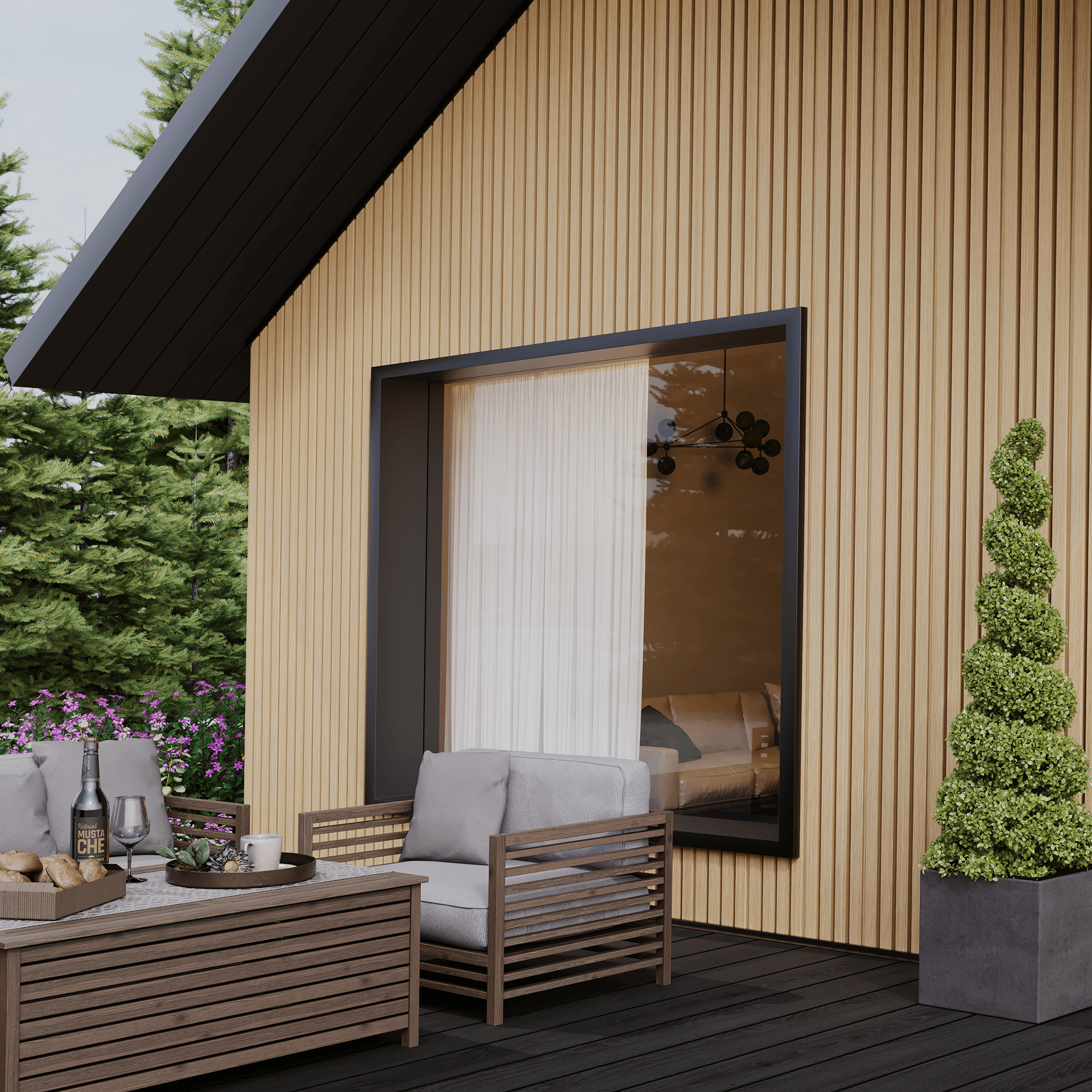
Do You Need Planning Permission for Cladding?
If you’re considering installing cladding on your home or in the garden, you’ve probably asked the question, ‘Do you need
Products in Stock
Lowest Prices
Express Delivery
10-Year Warranty
December Sale. Up To 15% Off.
Easy access to a green space is proven to benefit mental well-being, but with 1 in 8 British households having no garden, many face missing out on this essential contact with nature. Enter allotments, council-owned patches of land you can rent and tend to, offering that much-needed time outdoors for those with no or limited garden space.
However, despite their bountiful upsides, a new study from our gardening experts at Dino Decking has uncovered that spare allotments are few and far between, with many people on allotment waiting lists for years until they are offered a space. With thousands waitlisted, our team is sharing advice on how to create the feel of a garden when you don’t have direct access to one.
Allotments are small plots of land rented from local councils or private landlords, typically used to grow fruit, vegetables, and flowers. They’re a longstanding part of British culture, offering people a chance to enjoy outdoor space, grow their own food, and connect with nature. These are especially important for those without their own garden.
In recent years, demand for allotments has surged. With rising urbanisation, more people are living in flats or homes without gardens, while the cost-of-living crisis has made growing food at home an appealing way to save money. At the same time, the mental health benefits of gardening (especially since the Covid lockdowns) have become more widely recognised, driving even more interest.
These green spaces offer far more than just soil and seeds; they represent a lifestyle shift towards sustainability, well-being, and self-sufficiency.
After issuing FOI requests to local councils across the UK on their current allotment waitlist, we uncovered a growing list of 108,958 people waiting for allotment plots across the country. While the number of those on waitlists was widespread, we found that some areas saw far higher demand.
Portsmouth City Council topped the rankings with the highest number of residents on its allotment waiting list. The waterfront city reported a staggering 7420 people waiting for an allotment plot, accounting for 1 in 25 of the city’s adult population.
Edinburgh came in second, with 6,846 people currently waiting for an allotment space in the Scottish capital. Bristol was a close third, with 6,846 waiting on its list.
The London Borough of Lewisham had just shy of 4,000 people waiting for an allotment, while Wakefield had 3,687.
| Council borough | Region | Waiting list size |
|---|---|---|
| Portsmouth City Council | South East England | 7,420 |
| City of Edinburgh | Scotland | 6,846 |
| Bristol City Council | South West England | 6,466 |
| London Borough of Lewisham | London | 3,918 |
| Wakefield City Metropolitan District Council | Yorkshire and the Humber | 3,687 |
In terms of regions, South East England had the greatest demand for allotments, with 20,901 people on a list for an allotment, accounting for 19% of all those waitlisted in the UK. These eye-watering figures are over double that of the second most populous waiting list.
As the most inhabited region in the country, it isn’t hard to see why people here may be eager for an outdoor space to call their own, with 21% of London households having no garden, compared with 12% across the rest of the UK. The North West and South West ranked second and third, respectively, each accounting for 1 in 10 of all waitlisted individuals across the UK.
| Rank | Region | Total Count |
|---|---|---|
| 1 | South East England | 20,901 |
| 2 | North West England | 10,413 |
| 3 | South West England | 10,440 |
| 4 | Scotland | 12,263 |
| 5 | Yorkshire and the Humber | 8,494 |
At the moment, as of May 2025, the average wait time for an allotment is 4 years.
And, if nearly half a decade wasn’t long enough, some locations saw residents waiting over twice as long as the national average. West Dunbartonshire, Scotland and the London Borough of Haringey topped the rankings of councils with the lengthiest waiting lists, with an average wait of 9 years. Lewisham, Bolsover and East Riding all have 8-year-long waitlists, placing them joint second.
| Council | Waitlist in years | Total Count |
|---|---|---|
| West Dunbartonshire | 9 years | 20,901 |
| London Borough of Haringey | 9 years | 10,413 |
| London Borough of Lewisham | 8 years | 10,440 |
| Bolsover District Council | 8 years | 12,263 |
| East Riding of Yorkshire Council | 8 years | 8,494 |
While some councils have lengthy weighting lists, there are a handful that have under a few dozen people waiting for an allotment.
Those living in the Arun District Council, West Sussex, can look forward to joining a waitlist of zero as the council currently has nobody waiting for an allotment space.
Blaby District Council, Leicestershire, ranked as the authority with the second smallest waiting list, with just three people in line for an allotment space. Angus Council, Scotland, doubled Blaby’s waitlist but still had a manageable six people waiting for an allotment plot.
| Council | Number of people on the waiting list |
|---|---|
| Arun District Council | 0 |
| Blaby District Council | 3 |
| Angus Council | 6 |
| North Devon District Council | 8 |
| Orkney Islands Council | 13 |
It’s clear that the current demand for allotments far exceeds supply. So, what can be done?
Local authorities can review underused land and brownfield sites for potential allotment development. Some councils have already begun converting spare land into temporary or permanent plots to ease pressure.
Greater government support—both funding and planning incentives—could encourage councils to expand allotment provision. Community gardening schemes and urban agriculture projects could also receive more backing.
In areas with high demand, schemes that encourage plot sharing, crop rotation across smaller groups, or seasonal use could help more people access space, even if only part-time.
In the meantime, residents can explore community gardens, rooftop gardening projects, or container gardening at home as temporary alternatives while waiting for a full allotment plot. We’ve put together some tips on how to maximise your outdoor space.
If you already have access to an outdoor space that isn’t quite the botanical escape you would like (think concreted front yards, gardens covered in composite decking and gravelled patios), there are still ways to create an area you enjoy. We’ve broken down some of our top tips below:
Lacking floor space doesn’t mean you can’t still inject some greenery outdoors. A vertical garden is a perfect opportunity to inject a splash of nature outside, even when you are low on floor space.
To create your vertical garden, try adding some hanging baskets to an external wall and fill them with blooms like petunias and geraniums. You can also make use of climbing plants like sweet peas and clematis to add a lush texture to walls and fences.
Due to their versatility, potted plants are a great way to get the feel of a garden even when you are limited on outdoor space. When selecting your vegetation, try to select plants of varying heights to create a layered, fuller look. Make the most of the space you have, and don’t hold back on filling the area with larger pots to create a luscious look.
An outdoor screen can help elevate your garden, upgrading a drab concrete wall into a feature. In areas where there is enough space, using a screen can also be a fabulous way to create zones, sectioning off your dining alfresco set up from your plants or even creating a reading corner.
You might not expect to see a mirror in a garden, but it’s a classic trick to create a sense of depth and light. Position it opposite greenery to reflect the plants and make the area feel more open and plush.
Whether it’s through a statement wall or a corner rich in flowers, creating a focal point that draws the eye will give your space a curated feel.
Read more on our blog 6 small garden decking ideas.
Even if you live in a property with no access to external space, there are still plenty of clever ways to bring that tranquil garden escape indoors.
Plants and humans alike love sunlight, so lining your windowsills with indoor plants will give you a new, refreshing view while creating the perfect environment for plants to thrive. Cacti, succulents and rubber plants are the perfect additions to your indoor habitat.
Bulbs aren’t just for the outdoors; flowers like daffodils and hyacinths can be ‘forced’ into blooming indoors. While this process may take some time, having the bright colour of flowers, alongside their uplifting scent, can create a calming environment in your home.
Bring the great outdoors inside with a botanical wallpaper. These can make the perfect backdrop for rooms with limited light (for growing plants) or to enhance your existing indoor foliage.
Terrariums are their own mini ecosystems and can be an ideal project for smaller homes. Made with just a few simple tools, this low-maintenance garden needs only moss, soil, some tiny plants and a glass jar for a year-round garden in a container.
Data was gathered from FOI requests issued to the UK’s local councils requesting the number of individuals currently on waiting lists for allotments in their jurisdiction. This study is compiled from the 175 councils that responded.

Our sample pack contains a sample piece of each colour currently available. Order your free sample pack today to compare the colours and get a true feeling of the Dino Decking range!

If you’re considering installing cladding on your home or in the garden, you’ve probably asked the question, ‘Do you need

If you’re looking to go all out this festive season, you might be looking for some fantastic Christmas garden ideas